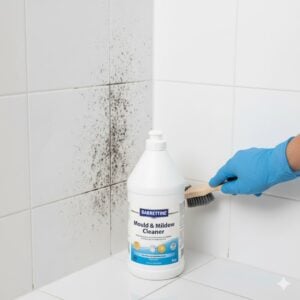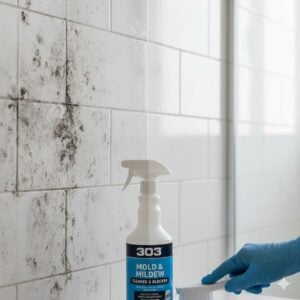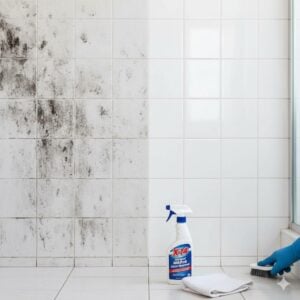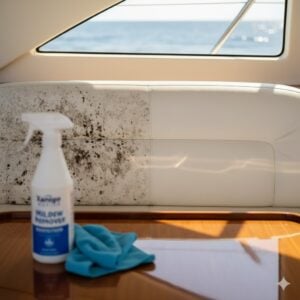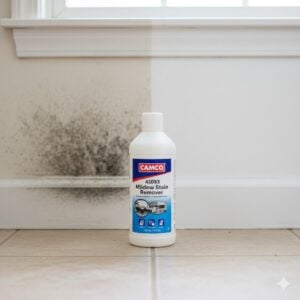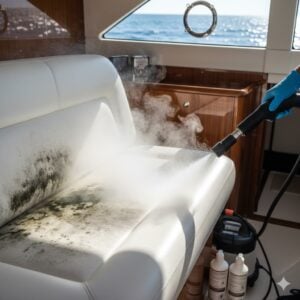When someone passes away in Dubai, their loved ones face a tough job: cleaning up afterwards. This job, called ‘Cleanup after death Dubai’, is more than just regular cleaning. It’s a special task that needs to be done with kindness and respect. People who do this job have to be careful and thoughtful, making sure they treat the place and things left behind in a respectful way. In this article, we’ll talk about the five most important steps in doing this job in a caring and respectful way. This is to make sure that the process is done properly and with a lot of care.
[lwptoc]
Table of Contents
Toggle1. Immediate Response and Assessment
When it comes to cleanup after death in Dubai, an immediate response is crucial. This promptness is not only vital for practical reasons, such as preventing the spread of biohazards, but it’s also an essential part of showing respect and care for those going through loss. As soon as a cleanup team is called in, their first task is to assess the situation carefully. This assessment involves understanding the extent of the cleanup required, which can vary significantly depending on how long the deceased was undiscovered and the environmental conditions of the area.
The assessment phase is a delicate process. It requires the team to be both thorough and sensitive. They need to examine the site to determine how far biological elements like bodily fluids may have spread. This could involve checking for signs of fluids on various surfaces, looking for any structural damages, and identifying any potential health hazards. For instance, in cases of unattended deaths, as outlined in 7 Key Aspects of Unattended Death Cleanups, the level of decomposition can pose additional challenges. The decomposition process can release harmful bacteria and gases, making it essential to assess the area accurately for thorough decontamination.
During this initial stage, the team also prepares a plan for the cleanup process. This plan outlines the necessary steps, equipment, and safety measures needed to complete the task effectively. It’s a plan that has to be both meticulous and adaptable, as every death scene has its unique challenges. The team must consider various factors, such as the size of the area, the types of surfaces affected, and the presence of personal belongings. They need to decide which cleaning methods and products will be most effective, always prioritizing safety and respect for the deceased and their property.
Equally important in this phase is the team’s preparation to protect themselves. They must don appropriate personal protective equipment (PPE) to ensure their safety while handling potentially hazardous materials. This includes gloves, masks, and protective suits, which are essential for preventing any risk of infection or exposure to harmful substances.
In conclusion, the immediate response and assessment stage in cleanup after death in Dubai is a critical first step. It sets the tone for the entire cleanup process, requiring a balance of technical skill, careful planning, and a compassionate approach. This phase is not just about evaluating the physical aspects of the job but also about understanding the emotional weight of the situation and proceeding with the utmost respect and sensitivity.
2. Use of Specialized Cleaning Techniques
The second key step in compassionate cleanup after death in Dubai involves the use of specialized cleaning techniques. This aspect of the cleanup process is particularly critical due to the unique challenges presented by death scenes, which often include the presence of biohazardous materials such as blood, bodily fluids, and tissue. These substances not only require specialized techniques for safe and effective removal but also necessitate a deep understanding of the health risks they pose.
When tackling the cleaning of a space after a death, especially one that might have been undiscovered for a period, the cleaning team must approach the task with precision and care. This involves using cleaning agents and equipment specifically designed to handle biohazardous materials. For instance, in the case of significant blood presence, as can be seen in 6 Crucial Techniques for Effective Blood Cleanup, it’s essential to use products that can not only clean but also disinfect the area, eliminating any potential pathogens.
The cleanup process often starts with the removal of any solid waste, followed by the application of industrial-strength cleaning agents. These agents are carefully chosen for their effectiveness against the types of bacteria and viruses typically found in biological matter. The cleaning process also extends to all areas that might have been affected by the decomposition process. This can include carpeting, furniture, and even the air within the space, as odors from decomposition can be quite pervasive and require specialized treatment to eliminate.
In addition to cleaning and disinfecting the visible areas, the team must also pay attention to less obvious places where biohazards might have spread. This includes checking under furniture, inside cupboards, and other hidden areas. In cases where the decomposition has been extensive, it might also be necessary to remove and replace certain elements of the property, such as sections of flooring or drywall, to ensure complete decontamination.
Another crucial aspect of the cleanup process is odor elimination. The odors associated with decomposition can be strong and emotionally distressing for the loved ones of the deceased. Using advanced techniques such as ozone generators or hydroxyl processors, the cleaning team can effectively neutralize these odors, making the space more bearable for those who need to inhabit or visit it afterward.
Safety is paramount throughout the cleaning process. The team must utilize proper personal protective equipment (PPE) to safeguard against exposure to harmful substances. This not only protects the cleaners but also ensures that the process does not introduce any additional health risks into the environment.
In summary, the use of specialized cleaning techniques in the cleanup after death in Dubai is a crucial step that requires expertise, attention to detail, and a comprehensive approach. It’s not just about removing visible signs of the death but also about ensuring the area is thoroughly sanitized and safe for future occupants. This process demands a deep understanding of the nature of biohazardous materials and how to effectively neutralize them, all while maintaining a respectful and compassionate approach to the task at hand.
3. Ensuring Safety and Compliance
Ensuring safety and compliance is a critical step in the compassionate cleanup process after a death in Dubai. This phase involves adhering to stringent health and safety regulations to protect both the cleaning crew and the residents from potential hazards. Compliance with these standards is not only a legal requirement but also a moral obligation to ensure the well-being of everyone involved.
Table: Key Safety and Compliance Measures in Death Cleanup
| Measure | Description | Importance |
|---|---|---|
| Personal Protective Equipment (PPE) | Use of gloves, masks, protective suits, and eye protection | Protects the cleaning crew from exposure to harmful pathogens and chemicals |
| Biohazard Disposal | Proper disposal of biohazardous materials in accordance with local regulations | Prevents environmental contamination and the spread of infectious diseases |
| EPA-Registered Disinfectants | Use of disinfectants approved by the Environmental Protection Agency (EPA) | Ensures effective elimination of pathogens and compliance with health standards |
| Training and Certification | Regular training and certification of the cleaning crew in biohazard management | Enhances the safety and efficiency of the cleanup process |
| Documentation and Record Keeping | Maintaining detailed records of the cleanup process | Provides transparency and accountability, ensuring compliance with legal standards |
Statistical Insight into Safety and Compliance:
- According to OSHA, workers in occupations that involve exposure to biohazards, including death cleanup crews, are at risk of contracting bloodborne pathogens.
- Proper use of PPE and adherence to safety protocols significantly reduce the risk of infection among these workers.
Ensuring the safety of the cleaning crew is paramount. The use of Personal Protective Equipment (PPE) is essential to protect them from direct contact with hazardous materials such as blood, bodily fluids, and decomposing tissue. PPE typically includes gloves, masks, protective suits, and eye protection. The correct use and disposal of PPE are crucial in preventing the risk of infection or exposure to harmful substances.
Proper biohazard disposal is another key aspect of safety and compliance. Biohazardous materials, including contaminated cleaning supplies and personal protective equipment, must be disposed of following local regulations. This ensures environmental safety and prevents the spread of infectious diseases. The use of EPA-registered disinfectants is also crucial. These disinfectants are proven to be effective against a broad spectrum of pathogens, ensuring that the cleaned area is safe for habitation.
Training and certification of the cleaning crew in biohazard management are also essential components of safety and compliance. Regular training ensures that the crew is up-to-date with the latest safety protocols and cleaning techniques. This not only enhances the safety and efficiency of the cleanup process but also ensures compliance with health standards.
Additionally, maintaining documentation and record-keeping of the cleanup process is vital. This includes details of the cleaning methods used, the types of disinfectants applied, and the disposal of biohazardous materials. Proper documentation provides transparency and accountability, ensuring that the cleanup process complies with legal and health standards.
In summary, ensuring safety and compliance in the cleanup after death in Dubai is a multifaceted process that requires meticulous attention to detail and adherence to strict health and safety regulations. This step is crucial in protecting the cleaning crew, preventing environmental contamination, and ensuring the area is safely restored for future occupants. By adhering to these measures, the cleanup process not only meets legal requirements but also upholds the highest standards of safety and respect for those affected by the loss.








